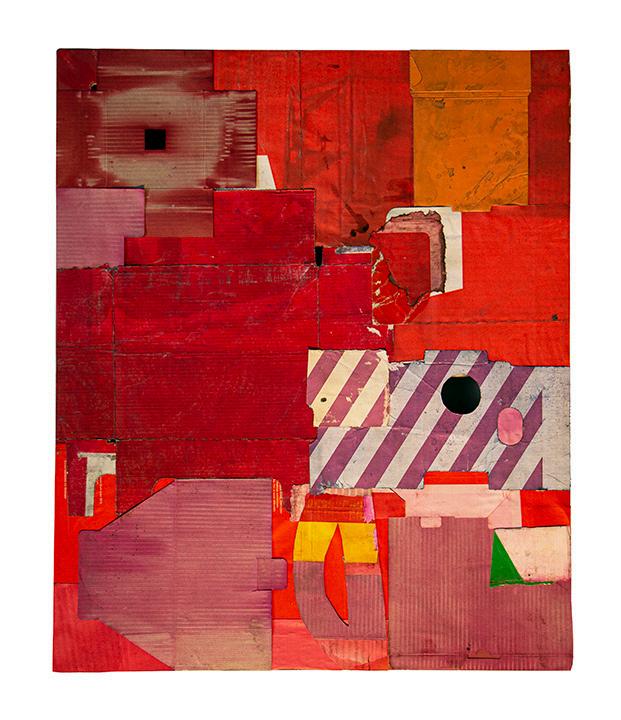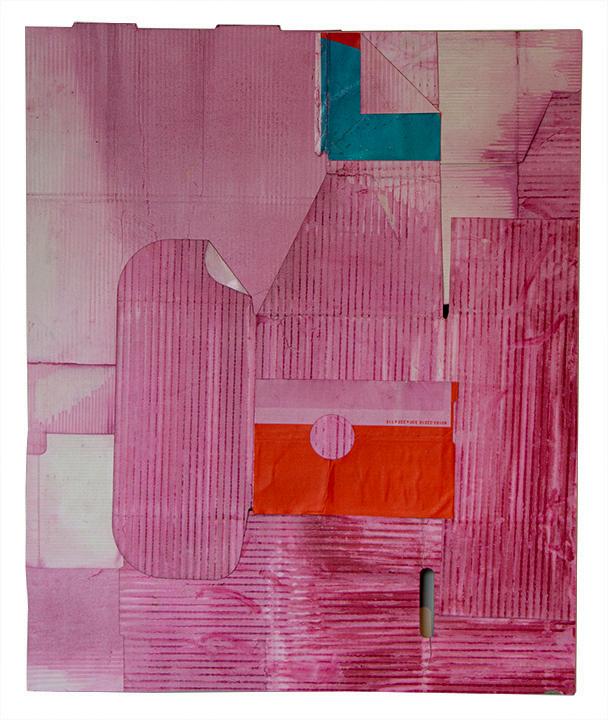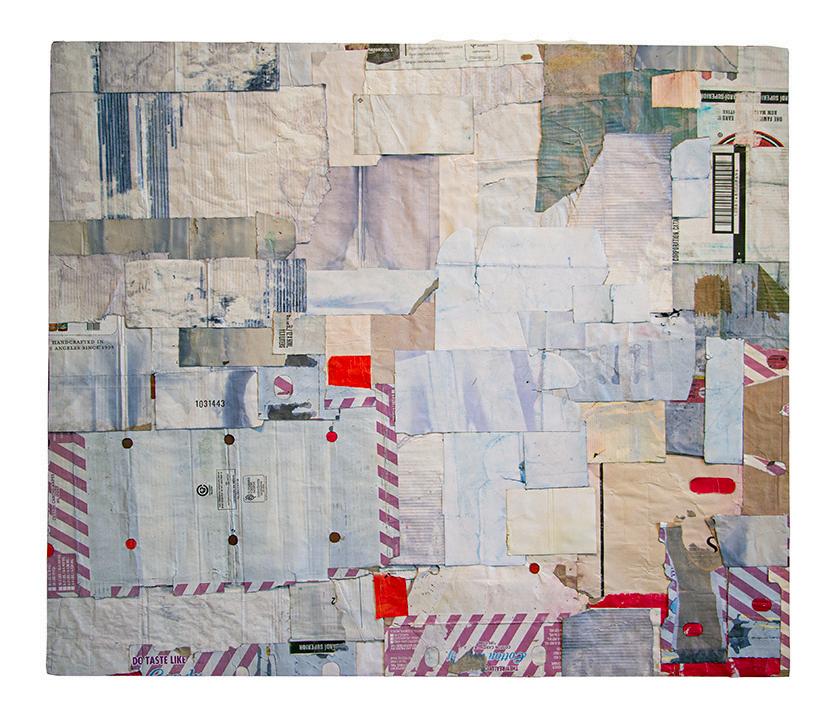

JODI HAYS Befores and Afters
Befores and Afters
Hearing “collage” can evoke “play”: conceptual thought-pieces placing whimsy next to happenstance, the resulting pieces a joyful discovery through the surprises of paper and knife. Hays’ process, however, is anything but play: the works in resolution are capital-W WORK, “pragmatic assemblages” that are as much time-travel montages of material prep as they are the objects that remain as echoes after.
-- a response by M Kelley




Hays’ work has often looked through the sunbleached blue collar of the American South, juxtaposing her own heritage of labor with the rings of construction that have pervaded her life in Nashville.
Whereas Hays’ conventional painting explored what she calls the “aesthetics of the broke-down,” the manual labor of these structural works is, instead, “an interest in when things break down.”

Many of the starter elements arise from the already broken: boxes, fabric, worn out furniture, uncovered hand-me-downs. Base material is saved and sorted and cut, indiscriminately; when you care for a household, Hays points out, your “habits of motion” create an “instinctual framing of the usefulness of an object in orbit to you.”

Piles are shifted and hauled, swept and stepped on, and eventually soaked and folded and gripped and rinsed and lifted and wiped and flattened through an intensive series of dye baths and degradation. The dye reclaims, the dye resists, the dye escapes, the dye occludes: “Dye,” goes the nononsense explanation, “is egoless. What you reveal through the process has little to do with you, and you have to find new ways to have authorship of it.”

Pattern is inherent, but not guaranteed: it must be unburied and recovered. The resultant pieces are then taken through additional labors: caustic stripping with bleach, the physicality of embossing or punching or cutting holes into surfaces, the addition of color that peeks from beneath the wear.


The work becomes as much about Hays’ ability to move through what is there, into the understanding and momentum of what could be: acknowledging the past through the intentional, visible mending of the present. The manual labor of these structural works is, an interest in when things break down.

There is history there, I am loving an object back into usefulness.

Love, as we know, is a labor. There’s the sweaty grimace of manual expenditure prevalent in the back and forth of preparation - a rigor both strongly utilitarian and industrial - and this grinding structure of time invested echoes too in the choices of retired industrial silkscreen aluminum stretchers and the intensive Boro stitching of materials in order to cover them.
-- M Kelley, December 2024



Jodi Hays is a painter and the recipient of grants from the Rauschenberg Foundation, Foundation for Contemporary Art, Sustainable Arts Foundation, Tennessee Arts Commission, and the Elizabeth Firestone Graham Foundation, among others.
Residencies include Hambidge Center for Creative Arts, Oxbow School of Art, Stove Works, The Cooper Union School of Art, and Vermont Studio Center. Her work has been reviewed favorably in Art Forum, published in New American Painting, and positively mentioned in Hyperallergic, New York Times, New Art Examiner and Two
Coats of Paint. Her paintings can be found in many public and corporate collections including the J Crew Group, Morgan Stanley, Fidelity, and the Birmingham Museum of Art. She has most recently shown at Night Gallery (Los Angeles), Susan Inglett Gallery (New York City), Devening Projects (Chicago), and Scott Miller Projects (Birmingham).

